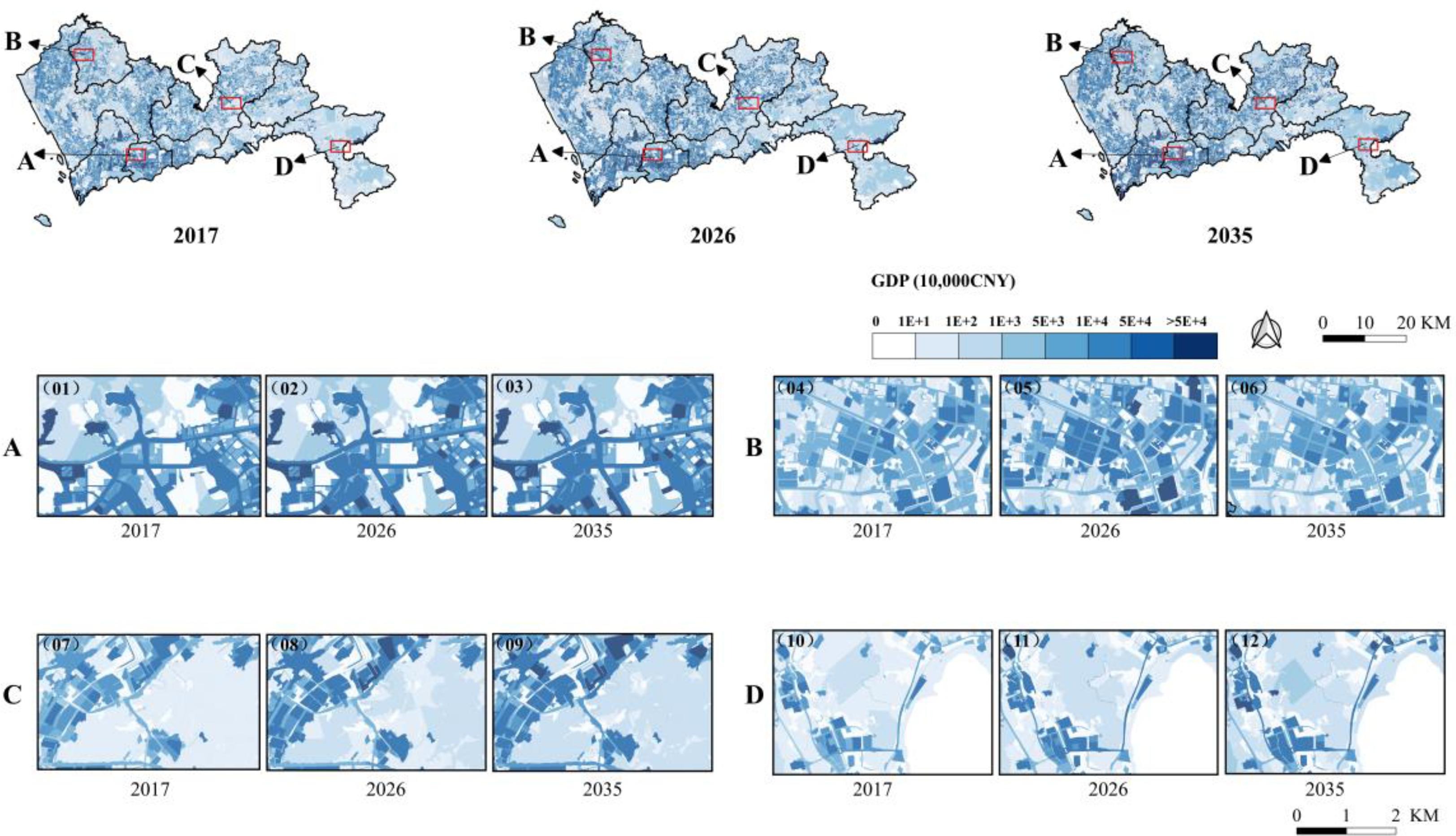Title: Fine-grained regional economic forecasting for a megacity using vector-based cellular automata

Abstract
It is important to measure uncoordinated regional urban economic development to help guide government policy. However, previous models have often struggled to capture the fine-grained spatiotemporal characteristics of economic development, thereby failing to provide insight into the fine-scale patterns. Sectoral structure and its evolution are strongly related to economic development and provide finer spatial information. Therefore, this paper proposes a framework for forecasting the spatiotemporal evolution of urban economic development at the cadastral parcel scale based on sectoral land use dynamics modeling and the S-curve economic model. The results of the case study conducted in Shenzhen, China, show good performance (FoM = 0.182, average R2 = 0.748, median R2 = 0.877). The sectoral structure in high-economic-level areas was found to be more balanced, and the economic volume tended to increase more. In contrast, sectoral land use types change more frequently in low-economic-level areas, and the economic growth rates are generally higher due to their lower economic base. Without government intervention, disparities in simulated economic volumes between regions will continue to widen in the short term. Hence, the government is encouraged to consider optimizing the sectoral structure in low-economic-level areas to promote coordinated regional economic development.
Keywords
Economic forecasting;
Cellular automata;
Land use;
S-curve of economic development;
Sectoral structure
Full Text Download
International Journal of Applied Earth Observation and Geoinformation
Q.E.D.









